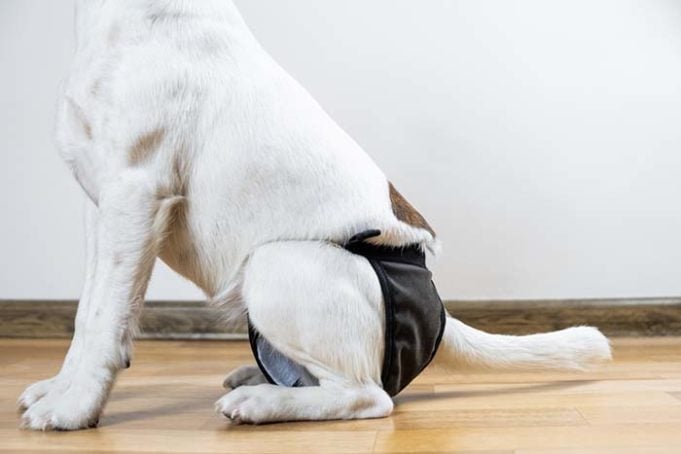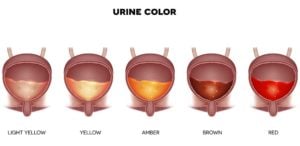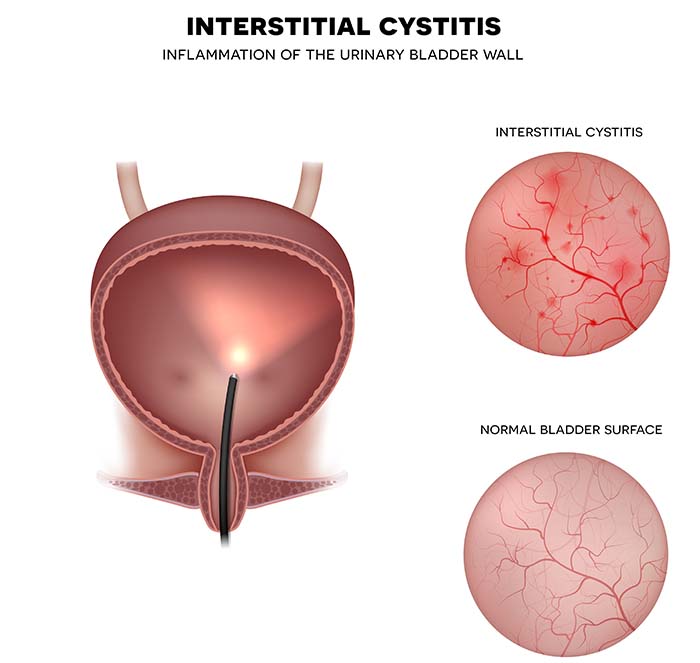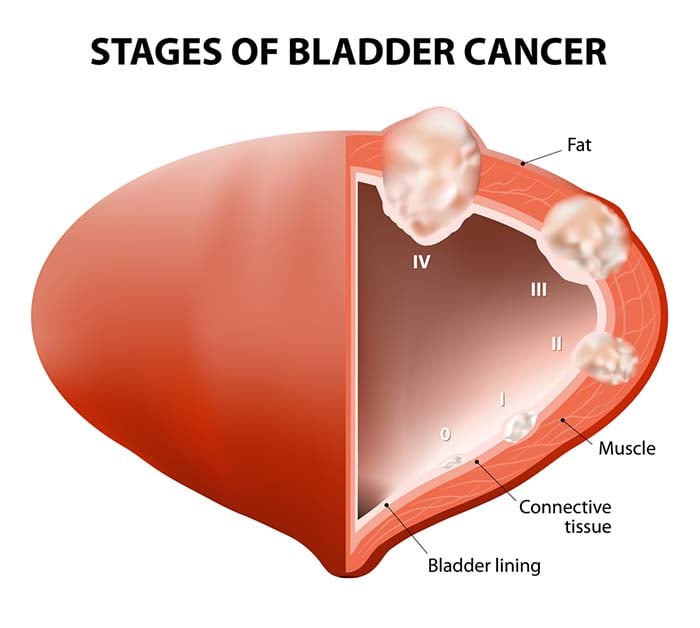Is your dog having accidents in the house even though they are properly housebroken? Does the dog have to urinate more often than usual? These are some of the common signs of urinary and bladder problems in dogs. Below are the other symptoms to look out for, how to recognize them and what to do if when spot them.
Table of Contents
1. Urinary Incontinence
Urinary incontinence is a condition that makes dogs pass urine uncontrollably and it's the most common sign of bladder issues in dogs. While it is often a symptom of some other urinary tract problem, it can also be caused by other health conditions.
Some conditions that cause incontinence are dog's hormonal imbalance, spinal injury, prostate disorders, congenital abnormalities and anatomic disorders. Certain medications may also lead to urinary incontinence in dogs as a side effect.
Symptoms:
If your pooch becomes incontinent, you may notice that his sleeping area is contaminated with urine. Dripping urine and loss of bladder control are the most important signs of urinary incontinence, which can lead to irritation and redness of the skin. Some dogs may excessively lick the area around the penis or vulva. This problem is most typical in senior dogs.
Treatment:
Treatment for a dog's urinary incontinence entails dealing with the underlying cause. You can't do this at home and will need to see a veterinarian. Your vet will prescribe appropriate medications to deal with the specific cause of urinary incontinence, like hormone therapy or drugs to strengthen the dog's urethral sphincter.
Surgery may be recommended when medication doesn’t yield any results. There is also a rather new therapy that includes collagen injections, which has shown promising results.
You can do a few things to manage this dog condition at home, such as putting waterproof mats or pads on your dog’s bedding, taking your pet for a walk more frequently and using dog diapers.
2. Bladder Infection
A bladder infection, which is part of urinary tract infection (UTI) recognized in dogs, is a common condition, just like other infections of the canine urinary tract. In fact, it is estimated that 14% of dogs will get a bladder infection in their lifetime.
This condition is caused by microbes, usually bacteria, which enter into the bladder of a dog and proliferate. While all dogs can suffer from a bladder infection, females are more susceptible to this health problem.
Symptoms:
A bladder infection can irritate the walls of a dog’s bladder, making them feel the urge to go even if there is only a tiny amount of urine present. Passing small amounts of urine is one of the most prominent symptoms of bladder infections.
Other signs of dog's bladder infection include painful urination, passing urine with a bad odor, pus or blood in the urine, changes in the color of the urine and inability to hold urine, which often results with urinating in the house.
Your pet may (excessively) lick his genitalia in an attempt to relieve the burning sensation. They may also feel lethargic and lack energy.
Treatment:
Typically, bladder infections in dogs are treated with prescribed antibiotics. What type of antibiotics your vet prescribes depends on the bacteria that is causing the infection. Your vet may also prescribe anti-inflammatory drugs along with antibiotics.
Some homemade remedies might help your dog with bladder infection symptoms, like adding apple cider vinegar to a dog's water, which corrects their pH balance. Herbs like barberry and bearberry may help because they have antibacterial and antiseptic properties. You can also try cranberry supplements, too.
3. Bladder Stones
Bladder stones in dogs are a common occurrence and they can develop in any part of your pet's urinary tract. However, they are usually found in the dog’s bladder. Bladder stones can be made of different minerals, including struvite, urate and calcium oxalate.
While the exact cause of bladder stones is not determined, there are some factors that contribute to their formation. These factors include bacterial infections in the pet's bladder, abnormal metabolism and type of diet. Some breeds are more likely to have bladder stones, like Beagles, Bulldogs, Dachshunds, Pugs, Dalmatians and Pekingese.
Symptoms:
Straining to urinate, blood in the urine and excessive urination frequency are the most common signs of a dog having bladder stones. Animals with bladder stones may also experience lethargy, loss of appetite and vomiting, especially if the stones cause the obstruction of the urinary tract. This is a medical emergency and can lead to severe damage in a dog’s bladder, kidneys and other organs.
Treatment:
Treatment will depend on the type of stones, their size and underlying causes. For example, your vet will prescribe antibiotics if he finds evidence of a urinary tract infection. The vet may also prescribe pain medication if they think they are necessary.
Fluid therapy is recommended when stones are small because it can flush the urinary tract and kidneys and encourage the passing of the stones through urination. Some types of stones often require surgery. Surgery is also necessary if stones cause a blockage of the urinary tract.
Struvite stones can be dissolved by certain foods and adjustment of your pet's diet, and the vet may prescribe a specific dietary adjustment if that is the case. This diet can also help you prevent reoccurrence. Here are some recipes that are often used for dogs with this issue, and Samantha's recipe specifically for struvite bladder stones.
4. Cystitis
Cystitis is an inflammation of the animal's bladder caused by many different conditions and diseases. Bacteria are the most common culprit behind cystitis in dogs, while other causes include abnormal anatomy, bladder stones and polyps in the bladder.
Symptoms:
Blood in the urine or hematuria is the most common symptom of cystitis. Other symptoms include straining to urinate, frequent urination in small amounts and loss of bladder control.
Treatment:
Treatment of cystitis is based on the underlying cause. Bacterial infections are usually treated with antibiotics. Bladder stones can be treated with medications, diet and ultimately surgery. Benign polyps in the bladder are usually removed with surgery, as well as bladder diverticulum.
The first goal of cystitis treatment is to relieve pain and discomfort and increase urine outflow. Anti-inflammatory medications are usually administered for this stage to go along with any antibiotics or other meds.
Once the pain is relieved, increased water consumption is recommended in order to dilute the urine and flush out inflammatory debris, bacteria and dissolved stones and crystals. Due to their condition, dogs may often refuse to drink enough, so you must encourage them to consume plenty of liquids.
5. Bladder Cancer
The worst of all bladder problems in dogs is of course cancer. There are different types of cancer that attack a dog’s urinary tract, but the most common one is found in the bladder – transitional cell carcinoma (TCC).
TCC is a type of malignant cancer that is also very aggressive. Luckily, bladder cancer in dogs is pretty rare. It is estimated that it only represents 1-2 percent of all canine cancers.
What causes bladder cancers is not yet known to scientists, although age is a significant factor since most cases of bladder cancer include dogs older than 6 years. Obesity might also be a contributing factor, especially in breeds that are more susceptible to bladder cancer: Border Collies, Australian Shepherds, Bichon Frise and some Terrier breeds.
Symptoms:
Bladder cancer usually mimics other urinary tract conditions, which is why it is so hard to diagnose. Common signs include straining to urinate, loss of bladder control, urinating frequently in small amounts and blood in urine. Some dogs may suffer from persistent and reoccurring urinary tract infections.
Treatment:
Unfortunately, canine bladder cancer is usually not curable, even with the most aggressive forms of treatment that may include surgery, radiation therapy, chemotherapy and palliative care. Your vet will probably prescribe piroxicam, which is a medication that relieves discomfort and may slow down the progression of cancer. While these treatment options are not able to stop the disease, they can prolong your dog’s life and increase the quality of it.
Summary
Your dog's bladder problems, or in a broader sense urinary problems in dogs, are fairly common. Pay attention to signs like frequent urination, urinating in small amounts, loss of bladder control and bloody or discolored urine.
Bladder problems cannot be cured or managed at home without professional intervention, so when you spot any signs of these issues, make a prompt trip to the vet for the right diagnosis and treatment plan. This often includes an increase in water intake and different medications, depending on the problem.
READ NEXT: 15 Best Low Protein Dog Food Brands for Kidney Health



















